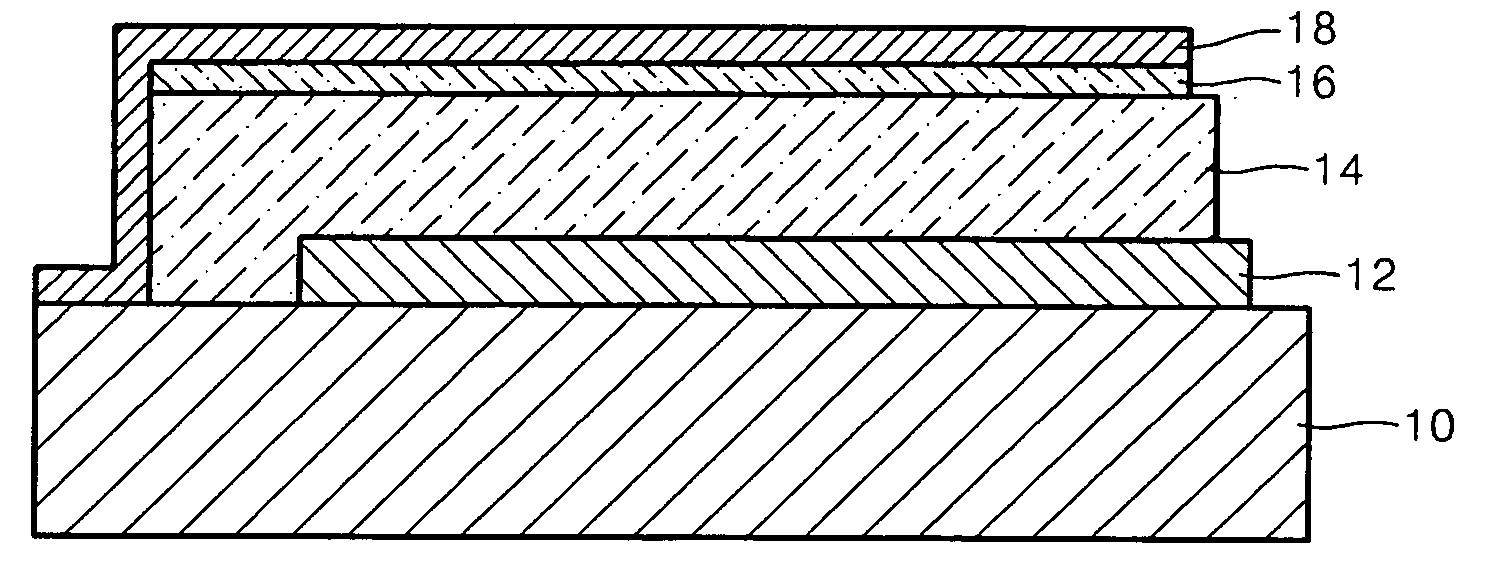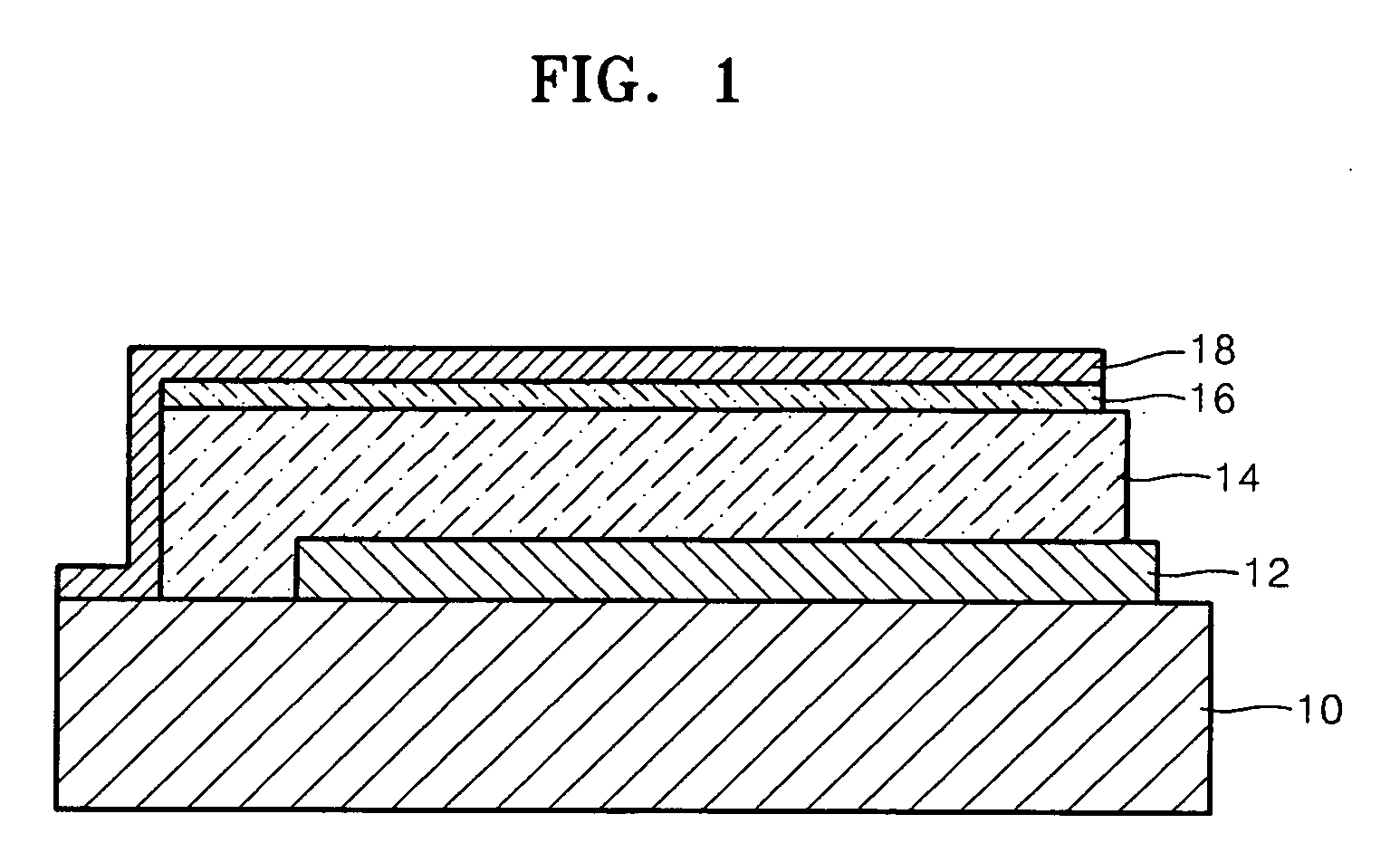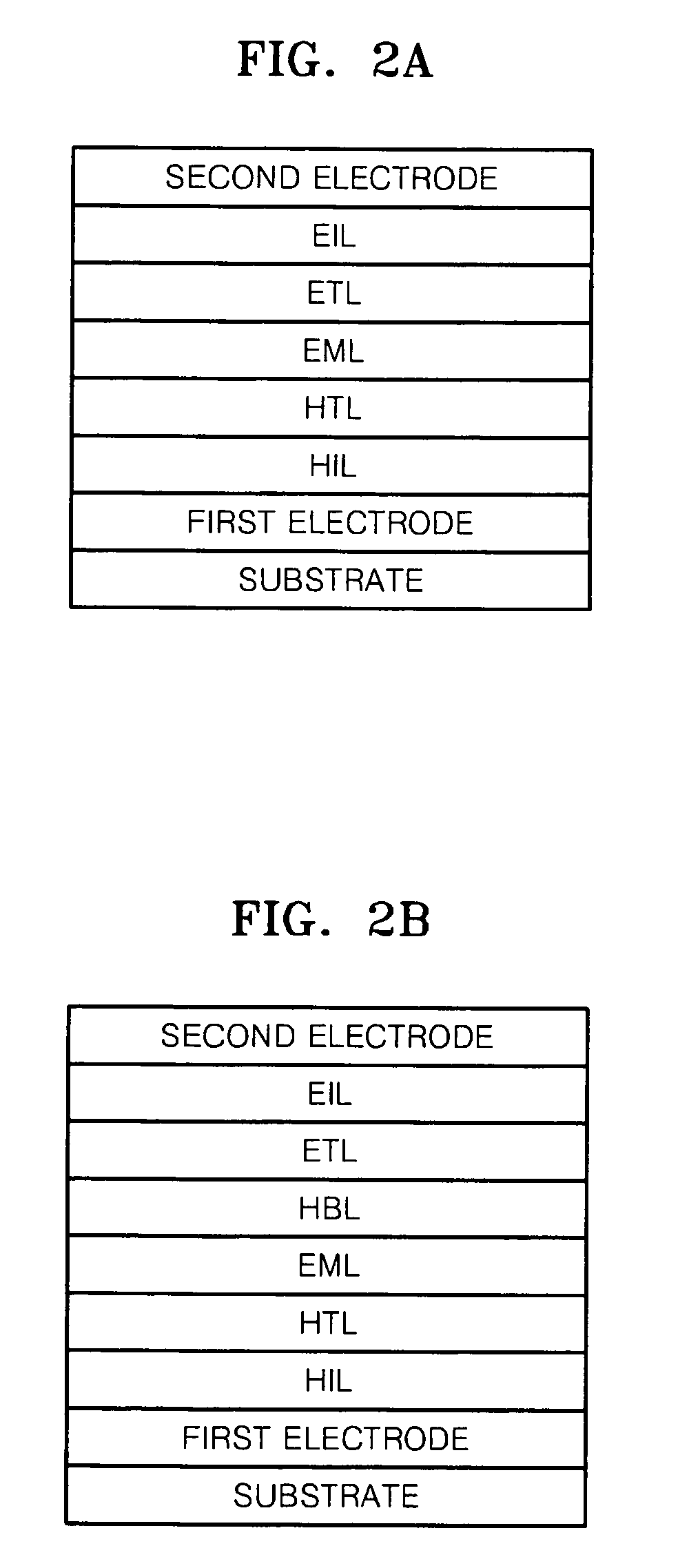Electron injecting layer including superacid salt, lithium salt or mixture thereof, photovoltaic device including the electron injecting layer, method of manufacturing the photovoltaic device, and organic light-emitting device including the electron injecting layer
a technology of electron injecting layer and superacid salt, which is applied in the direction of sustainable manufacturing/processing, non-metal conductor manufacturing, and final product manufacturing, etc., can solve the problems of increasing the cost of process, increasing the product price, and difficult uniform formation of eil to such a thickness. , to achieve the effect of improving the electron injecting layer
- Summary
- Abstract
- Description
- Claims
- Application Information
AI Technical Summary
Benefits of technology
Problems solved by technology
Method used
Image
Examples
example 1
Manufacturing of Organic Solar Cell
[0115]The lithium bistrifluoromethanesulfonylimide methanol solution was spin-coated to manufacture an organic solar cell having the following structure: ITO / PEDOT:pss(40 nm) / P3HT:PCBM(1:0.8)(180 nm) / LiTFSI(8 nm) / Al(150 nm)
[0116]A layer including a mixture of poly(3,4-ethylenedioxythiophene) and poly(styrene-sulfonate) was formed on a first electrode formed of indium tin oxide, and a photoactive layer including poly(3-hexylthiophene) and 1-(3-methoxy-carbonyl) propyl-1-phenyl(6,6)C61 was formed to a thickness of 180 nm on the mixed layer. Here, the weight ratio between the poly(3-hexylthiophene) and the 1-(3-methoxy-carbonyl) propyl-1-phenyl(6,6)C61 was 1:0.8.
[0117]Additionally, the lithium bistrifluoromethanesulfonylimide methanol solution was spin-coated on a target layer (i.e., the photoactive layer in Example 1) to form an EIL having a thickness of 50 Å, and a second electrode including Al was formed to a thickness of 150 nm on the EIL, thereby...
example 2
Manufacturing of Organic Solar Cell
[0118]An organic solar cell was manufactured using the same method as in Example 1, except that lithium tetraborate methanol solution was used instead of lithium bistrifluoromethanesulfonylimide.
example 3
Manufacturing of Organic Light-emitting Device
[0119]The lithium bistrifluoromethanesulfonylimide methanol solution was spin-coated to manufacture an organic light-emitting device having the following structure: m-MTDATA(750 Å) / α-N PD(150 Å) / DSA(300 Å):TBPe(3%) / Alq3(200 Å) / LiTFSI(80 Å) / Al(1500 Å)
[0120]For the anode, a Corning 15 Ω / cm2 (1200 Å) ITO glass substrate was cut into a size of 50 mm×50 mm×0.7 mm and washed by sonicating in isopropyl alcohol and deionized water for 5 minutes each, and then treated with UV ozone for 30 minutes. m-MTDATA was vacuum-deposited on the anode to form a hole injecting layer having a thickness of 750 Å. Next, α-NPD was vacuum-deposited on the hole injection layer to a thickness of 150 Å to form a hole transporting layer. After forming the hole transporting layer, DSA as a host and 3% TBPe as a dopant were deposited on the hole transporting layer to form an emitting layer having a thickness of 300 Å. Then, Alq3 was vacuum-deposited on the emitting laye...
PUM
| Property | Measurement | Unit |
|---|---|---|
| transparent | aaaaa | aaaaa |
| light energy | aaaaa | aaaaa |
| brightness | aaaaa | aaaaa |
Abstract
Description
Claims
Application Information
 Login to View More
Login to View More - R&D
- Intellectual Property
- Life Sciences
- Materials
- Tech Scout
- Unparalleled Data Quality
- Higher Quality Content
- 60% Fewer Hallucinations
Browse by: Latest US Patents, China's latest patents, Technical Efficacy Thesaurus, Application Domain, Technology Topic, Popular Technical Reports.
© 2025 PatSnap. All rights reserved.Legal|Privacy policy|Modern Slavery Act Transparency Statement|Sitemap|About US| Contact US: help@patsnap.com



